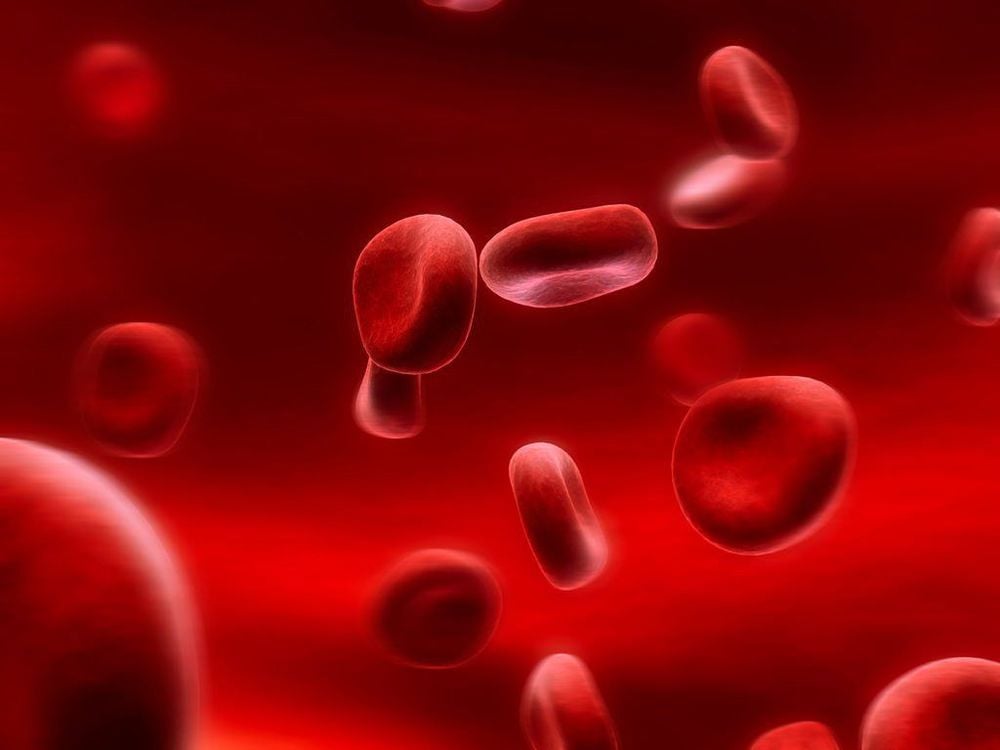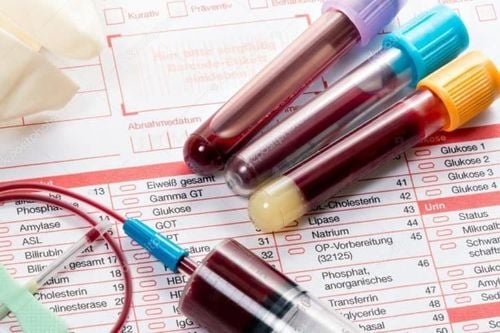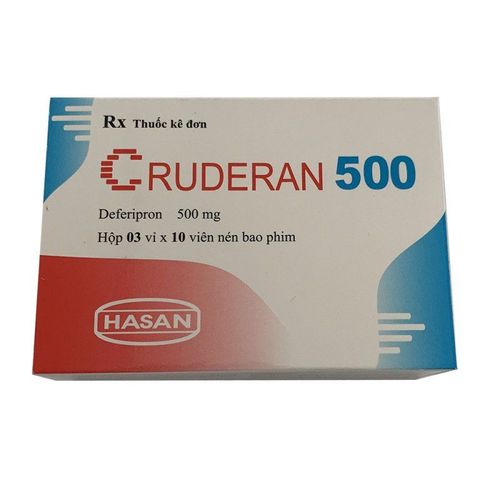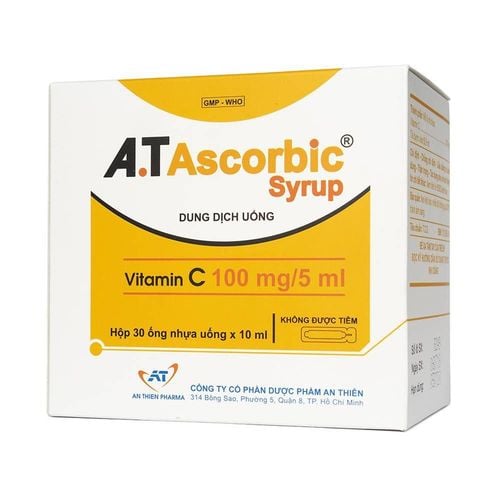This is an automatically translated article.
Hypochromic microcytic anemia may have many features similar to iron deficiency anemia or hereditary hemolytic anemia thalassemia. Because the symptoms of the disease are not obvious, it can lead to many consequences for the patient. It also causes serious damage to organs in the body. Even hypochromic microcytic anemia can be life-threatening.
1. General understanding of hypochromic microcytic anemia Hypochromic microcytic anemia is defined as anemia with red blood cells that are smaller than normal. At the same time, this condition is accompanied by symptoms of low hemoglobin. When hypochromic microcytic anemia occurs, it is characterized by a mean MCV erythrocyte volume index lower than 83 μm3. Hypochromic anemia reduces the ability of red blood cells to carry oxygen and leads to a lack of oxygen in the body's tissues.
Is microcytic hypochromic anemia syndrome thalassemia or not? Thalassemia is defined as an inherited condition called hemolysis, which is an abnormality of hemoglobin in red blood cells. And hypochromic microcytic anemia can also be caused by iron deficiency or thalassemia.
In order to clearly determine whether the disease is hypochromic microcytic anemia, it is necessary to perform the following tests:
If the anemia is caused by iron deficiency, a test can be performed to determine if the serum is decreased and the degree of decrease how. If due to thalassemia, a test should be performed to confirm that serum iron is not reduced, even in some cases, serum iron may be elevated. In the case of Thalassemia, it is possible to perform more molecular genetic methods to help identify the disease more accurately.

Thiếu máu hồng cầu nhỏ nhược sắc có thể có nhiều đặc điểm giống với tình trạng thiếu máu do thiếu sắt
2. Symptoms and signs that help identify hypochromic microcytic anemia The early symptoms of anemia can be subtle and can even be difficult to recognize. . In advanced cases, there are often signs that indicate a lack of red blood cells and cause damage to tissues in the body.
Despite this, hypochromic microcytic anemia also relies on some of the following common features to identify. However, to be more accurate in the diagnosis, other tests need to be performed.
The patient has difficulty breathing or the breathing rate may increase rapidly The patient is in an irritable mood Signs of dizziness The patient's skin is often pale, pale, The patient's heart rate also increases rapidly. patient's fatigue, weakness, even loss of strength The patient's eye mucosa is pale or the fingernails and feet lose their pink color. The patient's fingernails are spoon-shaped, and often break very easily. The person may be suspicious if these symptoms appear and do not go away on their own for about two weeks. And you can contact your doctor as soon as possible if it's accompanied by severe dizziness or shortness of breath.
3. Possible causes of hypochromic microcytic anemia 3.1. Causes of iron deficiency Iron deficiency is considered the most common cause of hypochromic microcytic anemia. And iron deficiency often occurs in cases such as: Women are pregnant, the daily diet does not meet the recommended iron requirements, or the body cannot absorb iron in food due to diseases. diseases such as celiac disease, Helicobacter pylori infection. Either it may be due to chronic blood loss for a prolonged menstrual cycle with severe conditions in women, or it may be due to gastrointestinal bleeding or it may also be caused by inflammatory bowel disease.
3.2. Causes of Thalassemia Thalassemia is known to be an anemia condition that occurs due to an inherited genetic mutation, and causes a significant effect on the production of hemoglobin in the body.
3.3. Causes of inflammation or chronic diseases Inflammation or chronic diseases can prevent red blood cells from functioning, affecting their function in the body. At that time, it is possible to make the activity of red blood cells cause a decrease in the absorption or use of iron minerals in the body.
Some chronic diseases can affect the hypochromic microcytic anemia such as: Cancer, kidney diseases, infectious diseases such as tuberculosis, HIV/AIDS, or endometritis the heart. Or it can also include inflammatory diseases such as rheumatoid arthritis, Crohn's disease, or diabetes...

Chẩn đoán bệnh thiếu máu hồng cầu nhỏ nhược sắc với xét nghiệm công thức máu toàn phần - CBC
3.4. Erythrocytopenic Anemia May be diagnosed as inherited or inherited from a mutated gene. Erythroblastic anemia often occurs in which the bone marrow, instead of producing normal healthy red blood cells, produces iron cells with chromogenic progenitor cells in the mitochondria. Because iron is trapped in the mitochondria, the body cannot combine iron to form hemoglobin, which is needed to help cells transport oxygen.
3.5. Causes of lead poisoning Lead poisoning is also classified as a cause of diseases, especially blood-related diseases. Lead poisoning from exposure to lead-containing paints or gasoline or from prolonged exposure to other materials containing lead can cause hypochromic microcytic anemia. Especially in young children.
4. Diagnosis of hypochromic microcytic anemia To help correct and timely treatment of hypochromic microcytic anemia, it is necessary to apply some methods of accurate diagnosis of the disease.
Your doctor can first make a diagnosis of hypochromic small cell anemia with a complete blood count (CBC) test. When the test results show that the patient is anemic, the doctor will continue to perform a peripheral blood smear test under the microscope. This test allows the doctor to detect structural changes in the red blood cells, which may be macrocytic or microcytic, or hypochromic, or isochromic or achromatic...
When the doctor has checked Once microcytic anemia is diagnosed, the doctor will continue to ask about the symptoms you may be experiencing. At the same time, the patient will be ordered to perform some more tests to help determine the main cause of microcytic anemia such as abdominal ultrasound, computed tomography CT scan of the abdomen. Simultaneously perform an endoscopy of the esophagus, stomach and small intestine or an upper gastrointestinal endoscopy can be performed for an accurate diagnosis.
In case the patient is a woman with signs of pelvic pain and a prolonged menstrual cycle, the gynecologist may perform additional tests to further diagnose uterine fibroids or other conditions. Other conditions may be considered to be the cause of heavy bleeding.
5. Complications of hypochromic microcytic anemia can negatively affect the body. Hypochromic microcytic anemia can be dangerous to the sufferer. However, at the beginning, the patient did not feel the disease, possibly due to mild anemia and not much effect on the body's condition. But when the disease is prolonged and is not treated in time, it shows that the patient's condition has abnormal signs affecting the internal organs. Furthermore, the disease can cause complications such as shock which often occurs with hemolysis or acute blood loss; or problems related to the lungs, or related to low blood and body weakness, or problems with the coronary arteries, or even worse can cause death of the person.
Complications due to hypochromic microcytic anemia are quite common in elderly people with a history of pulmonary or cardiovascular diseases.

Thiếu máu hồng cầu nhỏ nhược sắc có thể gây nguy hiểm đến người mắc bệnh
6. How to prevent and treat hypochromic microcytic anemia The main cause of hypochromic microcytic anemia is iron deficiency, so to prevent this disease you can do it Iron supplements according to the recommended needs for the body.
Diet with foods rich in iron. You should choose iron-rich foods such as red meat; beef, buffalo meat, seafood or eggs or green vegetables and combined with the use of juice containing vitamin C content helps to absorb iron into the body better. In addition, you should also choose foods that have both vitamin B12, folic acid, ... all belong to the group of micronutrients that have a good effect on iron absorption to prevent disease. Besides, you should also limit the use of stimulant drinks such as tea, coffee, beer, wine.... You should take iron supplements for the body. You can choose the right type of iron supplement for your body to increase iron absorption, especially for pregnant women, iron supplements play an important role for the normal development of the fetus. and ensure the mother's health. In the case of using iron tablets, you need to be consulted and prescribed by your doctor so that the supplement process is effective and does not affect your health status. Treatment of hypochromic microcytic anemia depends on the cause of the disease and after performing tests to confirm the diagnosis, the doctor can prescribe a treatment plan with: the process of performing a blood transfusion with the hospital In severe cases, either hormone supplements to treat heavy menstrual bleeding, or drugs that stimulate the body to make more red blood cells, or surgery to treat stomach ulcers or mass Tumors in the intestines, or taking antibiotics to treat chronic infections that may be a risk factor for anemia, or performing chelation therapy to reduce lead levels in these cases hypochromic microcytic anemia in children.
In severe cases, iron infusion can be performed. However, this method can cause side effects such as anaphylaxis, serum sickness, thrombophlebitis and pain in the patient. This method can also be applied to patients who cannot tolerate iron or do not take iron tablets or patients who have lost a lot of blood due to a vascular disorder. In these cases, the doctor will treat iron with the required amount for 6 months or more and at the same time, adjust the hemoglobin level to supplement the body's iron stores to meet the recommended needs.
Information about hypochromic microcytic anemia shows that hypochromic microcytic anemia has a significant impact on the health of patients, and can even be life-threatening for those with disease.. However, when you understand this disease and how to prevent it, it will help you prevent or treat it more effectively.
Vinmec International General Hospital is one of the hospitals that not only ensures professional quality with a team of leading medical doctors, modern equipment and technology, but also stands out for its examination and consultation services. comprehensive and professional medical consultation and treatment; civilized, polite, safe and sterile medical examination and treatment space.
Please dial HOTLINE for more information or register for an appointment HERE. Download MyVinmec app to make appointments faster and to manage your bookings easily.













